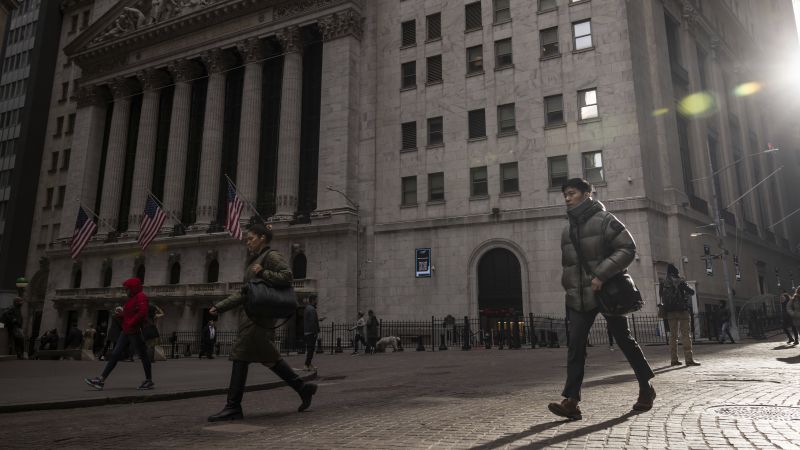The Dow Jones Industrial Average is, at best, an imperfect barometer of stock market activity among a narrow band of very large US companies. It’s clunky, and too limited in scope for any Wall Street pros to pay serious attention to it.
Nevertheless, the Dow persists.
When the Dow hit the 40,000 mark on Thursday, the news was splashed across most major TV news chyrons and websites, that comforting whole number telling the world that something good is happening. Maybe you’re not quite sure what it means. But you know it’s up, and up is better than down.
“Mention ‘the Dow’ and, to most people, that means the stock market,” said market strategist Art Hogan. “The Dow Jones industrial average is an instant way of telling the world which way the market is moving, even if the average isn’t an accurate measure of the thousands of stocks listed on the nation’s exchanges.”
While most professional investors look at the S&P 500 — a much broader measure of what’s happening on Wall Street — everyday Americans look to the Dow. The number of Google searches for “Dow Jones” is always higher than the searches for “S&P 500,” said Nick Colas, co-founder of market research firm DataTrek.
“If you’re not an investor, you know that a rising stock market means the economy is decent, and you probably have less of a chance of being laid off,” Colas said.
There’s nothing magical about the Dow. It’s just an index that tracks the stock market activity of 30 large US companies, from Amazon to McDonald’s to the Walt Disney Company. But it is very old, and that’s partly why it sticks around.
“The Dow is, no doubt, an anachronistic index,” says Daniel Alpert, managing partner of Westwood Capital. “Its primary benefit is that it goes back forever.”
If you wanted to peek at what stocks were doing in the days leading up to the October 1929 crash, the Dow is the only index that has that information preserved in amber.
You can trace the Dow back to the 1890s, whereas the S&P 500 wasn’t created until 1957, well after the economic upheaval of World War II.
The Dow serves as a running history of the US economy, like those charts that show the evolution of humans from Neanderthal to homo sapien.
You can track the rise and fall of heavy industry and the emergence of Silicon Valley through changes in the Dow’s composition, which was once dominated by the likes of Standard Oil and US Steel. These days, UnitedHealth, Microsoft and Goldman Sachs are the Dow heavyweights.
Serious traders sometimes look down their nose at the Dow because of the way it ranks companies by share price, rather than by market capitalization, like the S&P 500 does. Market capitalization measures the total value of a company on the stock market.
In the Dow, a smaller company with less relevance to the economy can outweigh a bigger company. In its current iteration, for example, the Dow deems Goldman Sachs — a Wall Street bank with almost no consumer-facing business, valued at about $125 billion — more important than Apple, a nearly $3 trillion tech behemoth with a billion customers.
The way the points work: You take the price of one share of each of the 30 companies, add those up and divide by the “Dow divisor,” a constant figure that helps account for fluctuations in the market.
Explaining the weird logic of the Dow, Colas told me: “If somebody asks you how your kids are, what you do is you add up their ages. I’ve got a 10, 5 and 3 year old — I’m an 18 … A higher number doesn’t really tell you anything, but it’s like, OK, my kids are getting older.”
Despite its flaws, the Dow is a strong brand that’s been embedded in the American psyche.
“It’s a highly imperfect index,” Alpert says. “But it’s the word that, in the shortest possible number of letters, describes Wall Street.”
Read the full article here




